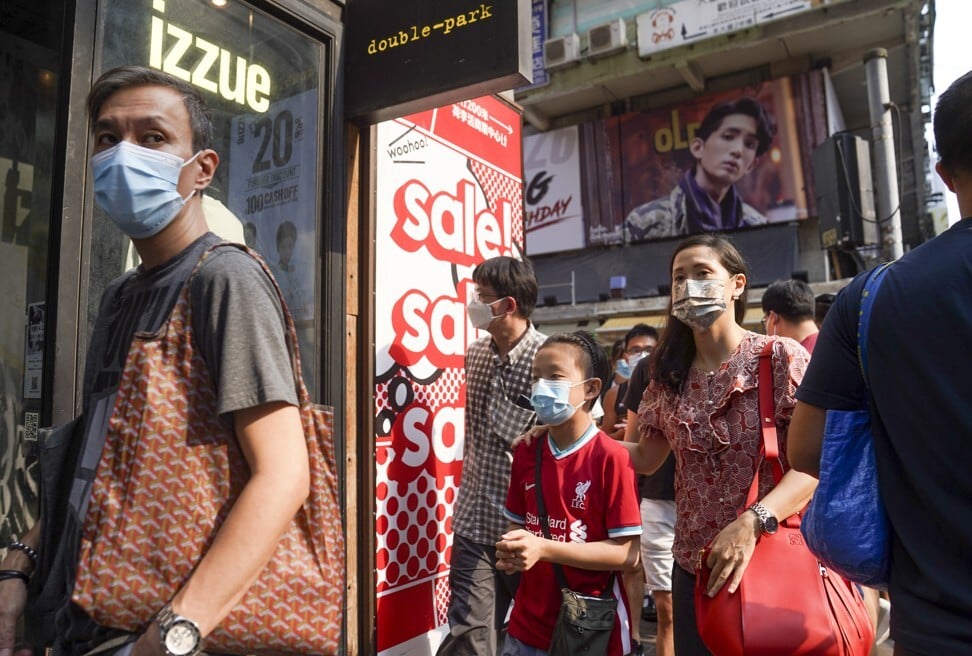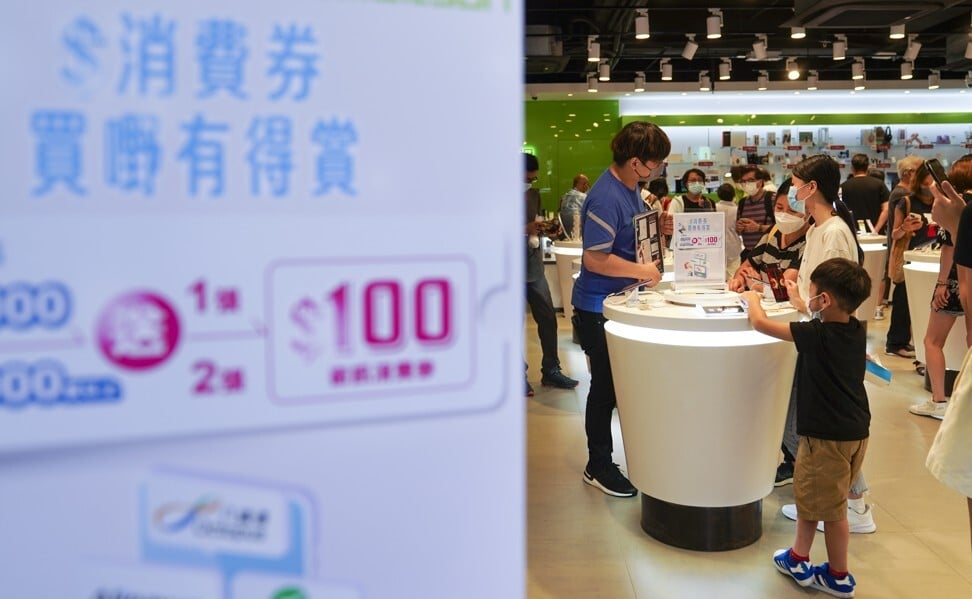
Hong Kong retail sales surge 11.9 per cent in August, following launch of HK$5,000 e-voucher scheme
- August sales across the city totalled HK$28.6 billion, according to official figures published on Thursday
- Government attributes scale of the increase to its digital voucher scheme, a HK$36 billion drive to stimulate local spending which launched at start of August
Hong Kong’s retail sales shot up 11.9 per cent year on year in August, the biggest increase in four months, fuelled by the launch of a HK$36 billion digital voucher scheme aimed at boosting consumer spending.
Provisional figures released by the Census and Statistics Department on Thursday showed that sales for the month totalled HK$28.6 billion (US$3.7 billion).
Online sales remained strong, jumping 16.5 per cent year on year, with transactions of HK$2.1 billion accounting for 7.4 per cent of the total value. For the first eight months of the year, the online figure was up 45.2 per cent from the same period in 2020.
Separately, the year-on-year growth figure for July was revised down slightly to 2.8 per cent.

A government spokesman said the digital voucher scheme was behind the notable pickup of sales in August.
“The consumption voucher scheme should continue to bode well for local consumption sentiment in the rest of the year,” he said.
“Nevertheless, keeping the epidemic under control remains pivotal to a full-fledged recovery of the retail sector and the overall economy. It is thus essential for the community to strive towards more widespread vaccination.”
On Wednesday, officials revealed that 70 per cent of 6.3 million qualified residents chose Octopus among the four service providers selected for the scheme, while 20 per cent opted for AlipayHK. The rest used the services of Tap & Go and WeChat Pay HK.
Octopus most-used platform for Hong Kong government’s e-vouchers
The first instalment of HK$2,000 was released on August 1 across all platforms, and the second will start to be distributed on Friday, which is also National Day.
Octopus users will receive their second HK$2,000 payment on Friday, and another HK$1,000 in December. Users of the other digital payment platforms will receive the full HK$3,000 on Friday.
Financial Secretary Paul Chan Mo-po previously estimated the initiative would contribute 0.7 per cent growth to gross domestic product this year.
Jessie Wong Hok-ling, head of the budget and tax policy unit of the Financial Secretary’s Office, said the voucher scheme had encouraged consumers to sign up for electronic payment methods, pointing to the 3 million new users of the four platforms and the inclusion of 65,000 more merchants.
“I think the economic growth contributed by this scheme will be more than expected, as the discounts rolled out by the merchants in conjunction with the scheme will further boost consumer sentiment,” she said.

The decline finally began to reverse in February, when sales jumped a record 30 per cent year on year, although the pace of recovery has slowed since then.
By category, sales for footwear, related products and other accessories saw the highest jump in August, growing 62 per cent year on year. Next were eyeglasses and other optical products, with 60 per cent growth, followed by apparel, with 36 per cent growth.
But sales at bricks-and-mortar supermarkets fell by 8 per cent, year on year.
Hong Kong’s capital market chalks up best nine months since 1980
Annie Tse Yau On-yee, chairwoman of the Hong Kong Retail Management Association, said the growth last month was close to expectations, but noted that compared with August 2018, sales were still down about 25 per cent.
“It means there’s still a long way to go before the retail industry can really be on track for recovery,” she said.
Tse said many association members believed that the growth from the e-voucher scheme’s second round in October would not be as robust as the first.
“They foresee that people will be more cautious. They will walk around and look for promotions and discounts in order to get good bargains,” she said, adding that some people might choose to save the next e-vouchers for Christmas shopping at the end of the year.

